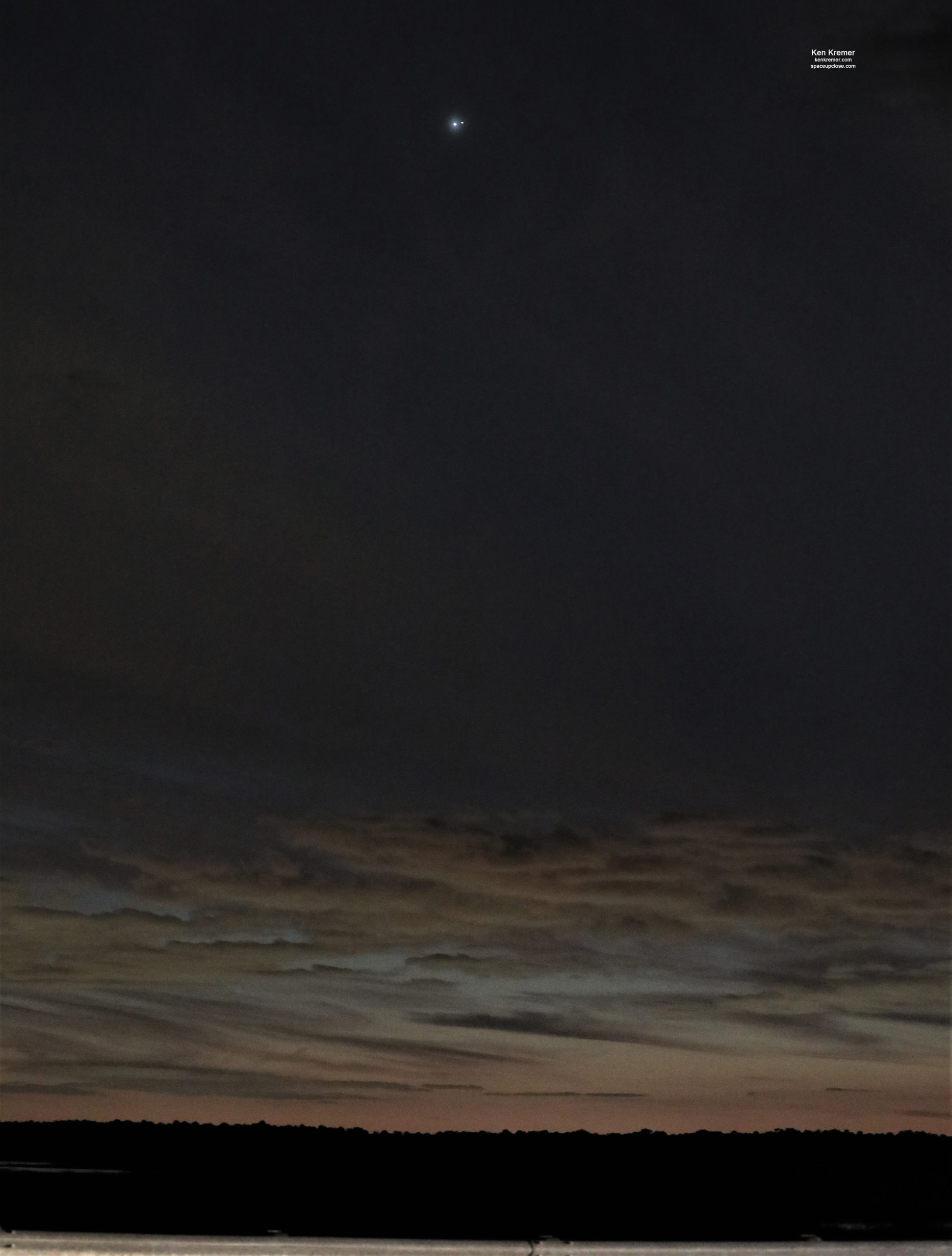
For SpaceUpClose.com & RocketSTEM
TITUSVILLE, FL – Skywatchers fortunate enough to experience clear skies were treated to a spectacle not seen in centuries as the gas giants Jupiter and Saturn approached to within 0.1 degrees (six arc minutes) culminating during the evening sky of Dec. 21 as seen from our vantage point on Earth – for an event known as the ‘Great Conjunction’ since it involves the two largest planets in our Solar System – and briefly formed the ‘Christmas Star’ of 2020.
This Great Conjunction actually has been centuries in the making! And coincides with the Winter Solstice on Dec. 21
It has been 4 centuries or 400 years since the two gas giants were this close in 1623 and 8 centuries or 800 years in 1226 since they were visible in the evening.
The Great Conjunction is also known popularity as the Christmas Conjunction – since it took place during this year’s Christmas season week – and is a welcome end to the horrible year of the coronavirus and the COVID-19 pandemic afflicting the entire world and a brief bright spot otherwise gripping the United States currently with record cases, hospitalizations and deaths.
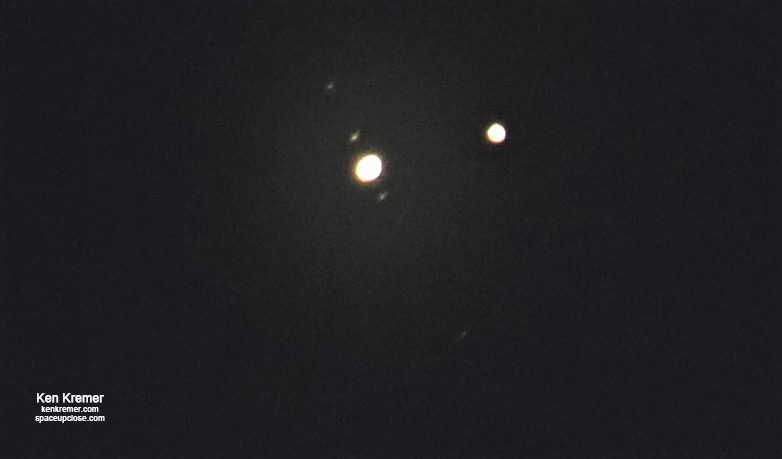
And although they appear to be close in the night sky as they pass by one another, in actuality they were separated by some 400 million miles (640 million km) in space.
The Great Conjunction of Jupiter and Saturn is easily visible to the naked eye and no telescope is needed – just clear, cloud free skies
“Skywatchers are in for an end-of-year treat. What has become known popularly as the “Christmas Star” is an especially vibrant planetary conjunction easily visible in the evening sky over the next two weeks as the bright planets Jupiter and Saturn come together, culminating on the night of Dec. 21,” NASA wrote is a press release Dec. 15.
“What makes this year’s spectacle so rare, then? It’s been nearly 400 years since the planets passed this close to each other in the sky, and nearly 800 years since the alignment of Saturn and Jupiter occurred at night, as it will for 2020, allowing nearly everyone around the world to witness this “great conjunction.”
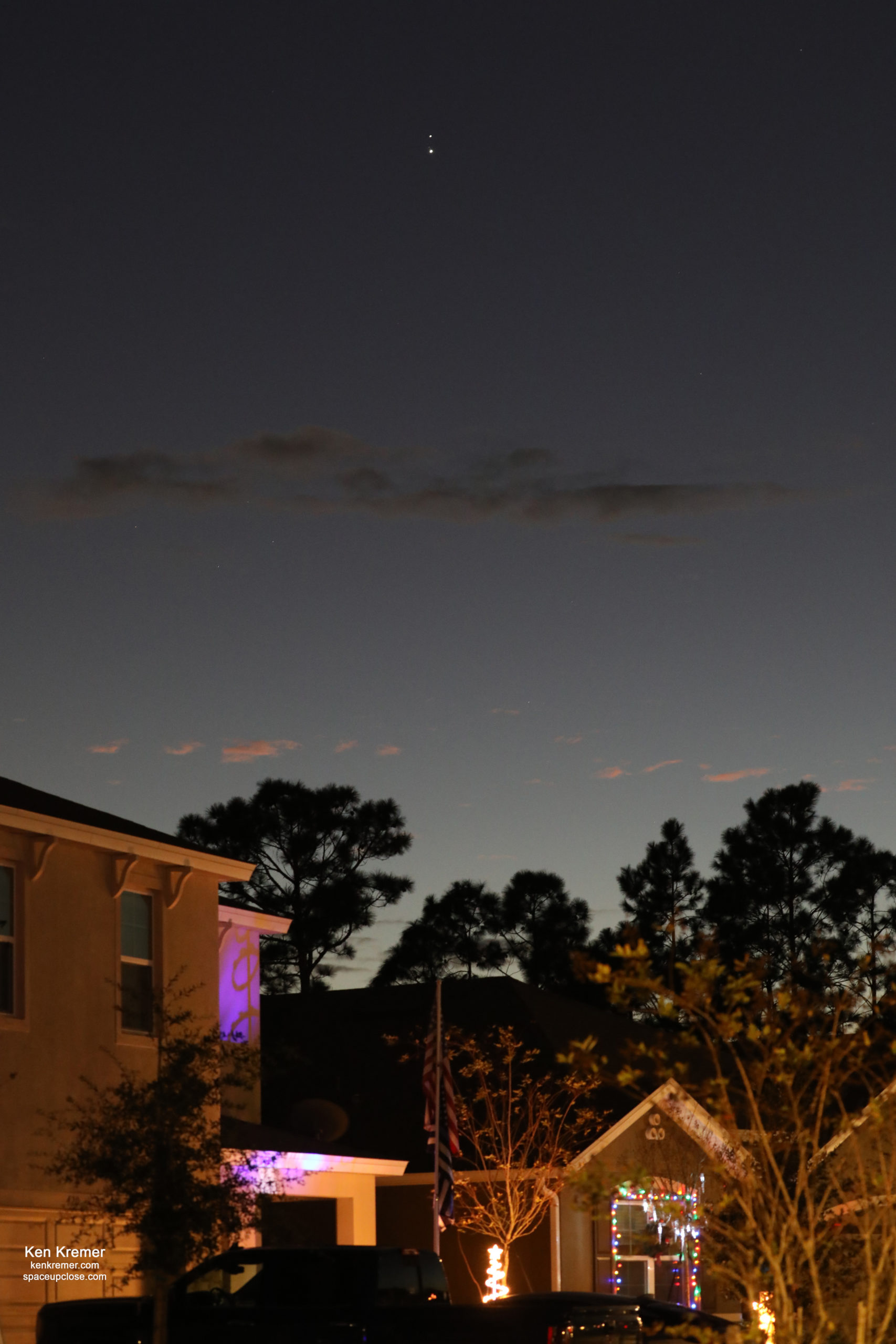
My simple DSLR photos herein from Dec. 19 (ca. 0.3 degrees apart), 21 (0.1 degrees apart) and 23 (ca. 0.3 degrees apart) illustrate the Great Conjunction as seen from the Florida Space Coast region – wide and focused views.
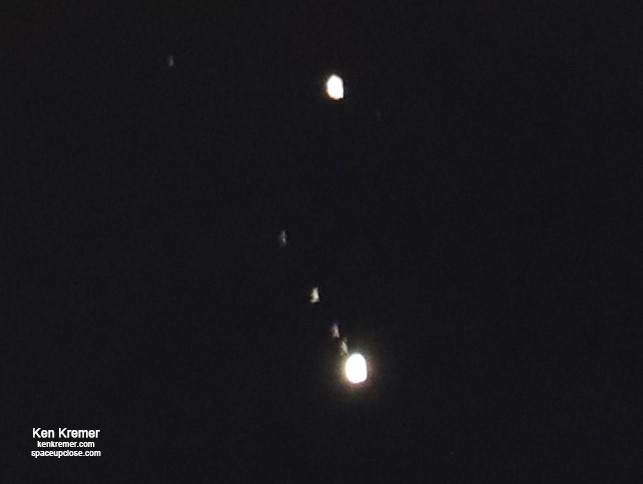
A few of us held a mini Star Party on Dec. 21 in Geneva, FL along with the American Space Museum based in Titusville. See my photos.
Beyond the sizzling views afforded by the naked eye – with telescopes, binoculars and telephoto lenses you can see not just the gas giants themselves but also exciting banding on Jupiter, the rings of Saturn and the moons of Jupiter and Saturn
And you can still see Jupiter and Saturn very close in the sky for a few more nights as the “Great ‘Christmas’ Conjunction” continues
Look to the Southwest low to the horizon about an hour after sunset.
Jupiter and Saturn have been putting on a splendid sky show in evening as they have been approaching one another for the past few months – with Mars also high in the sky now past opposition and dimming since October
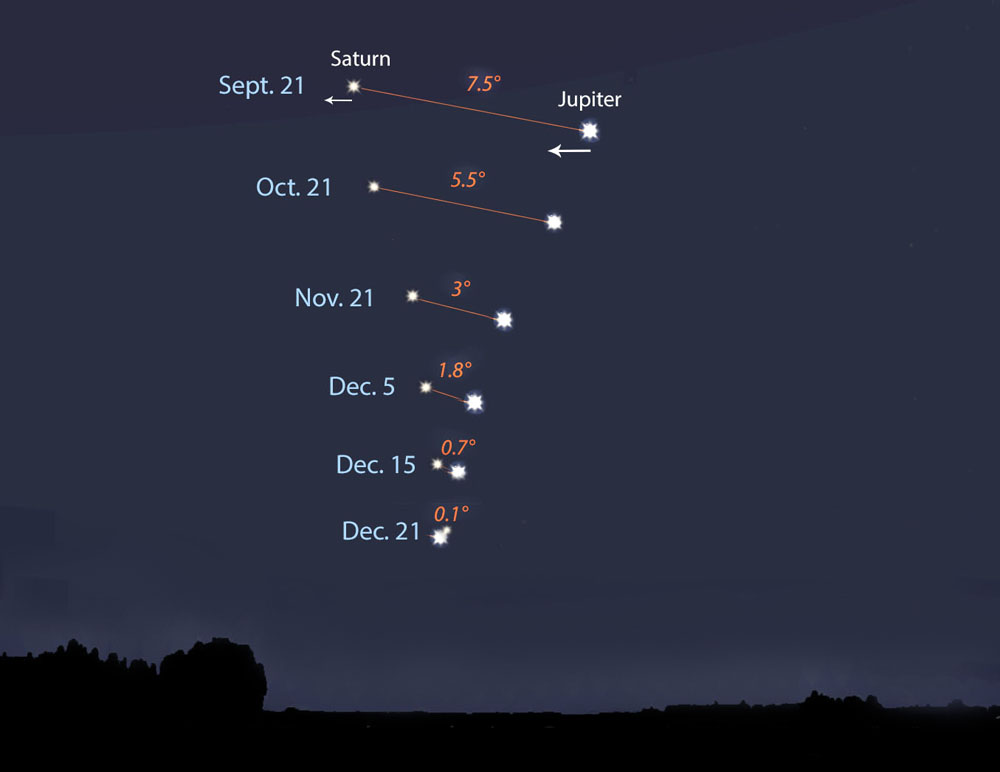
In fact Jupiter and Saturn regularly appear to pass by each other in the solar system and align for conjunction in the sky about once every 20 years.
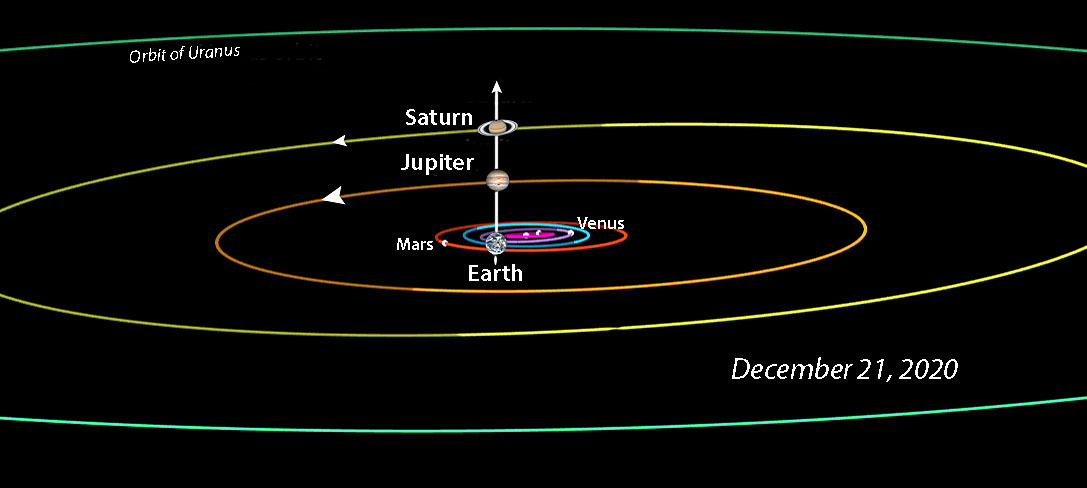
The telescope had recently been invented by Galileo Galilei and he discovered Jupiter’s four largest moons Io, Europa, Ganymede, and Callisto peering through his telescope in 1610
“In that same year, Galileo also discovered a strange oval surrounding Saturn, which later observations determined to be its rings. These discoveries changed how people understood the far reaches of our solar system,” wrote NASA.
But the Great Conjunction of 1623 has difficult to see since its was only 13 degrees from the Sun
“The last time the two gas giants were this close was in July 1623, about 20 years before the outbreak of the English civil war and when Galileo Galilei was peering through his crude telescopes. If fact, Galileo would have struggled to see this conjunction, owing to the fact that Jupiter and Saturn were placed just 13 degrees from the Sun,” noted Astronomy Now.
“Conjunctions of Jupiter and Saturn are the rarest conjunctions between the major planets, occurring roughly every 20 years as a result of the combined effect of Jupiter’s 11.9-year and Saturn’s 29.5-year journey once around the Sun. Commonly, their separation is much greater; fast forwarding to the beginning of this millennium, in 2000, another tough conjunction to observe, the planets were over a degree apart. You get the idea then that this conjunction is a very special event.”
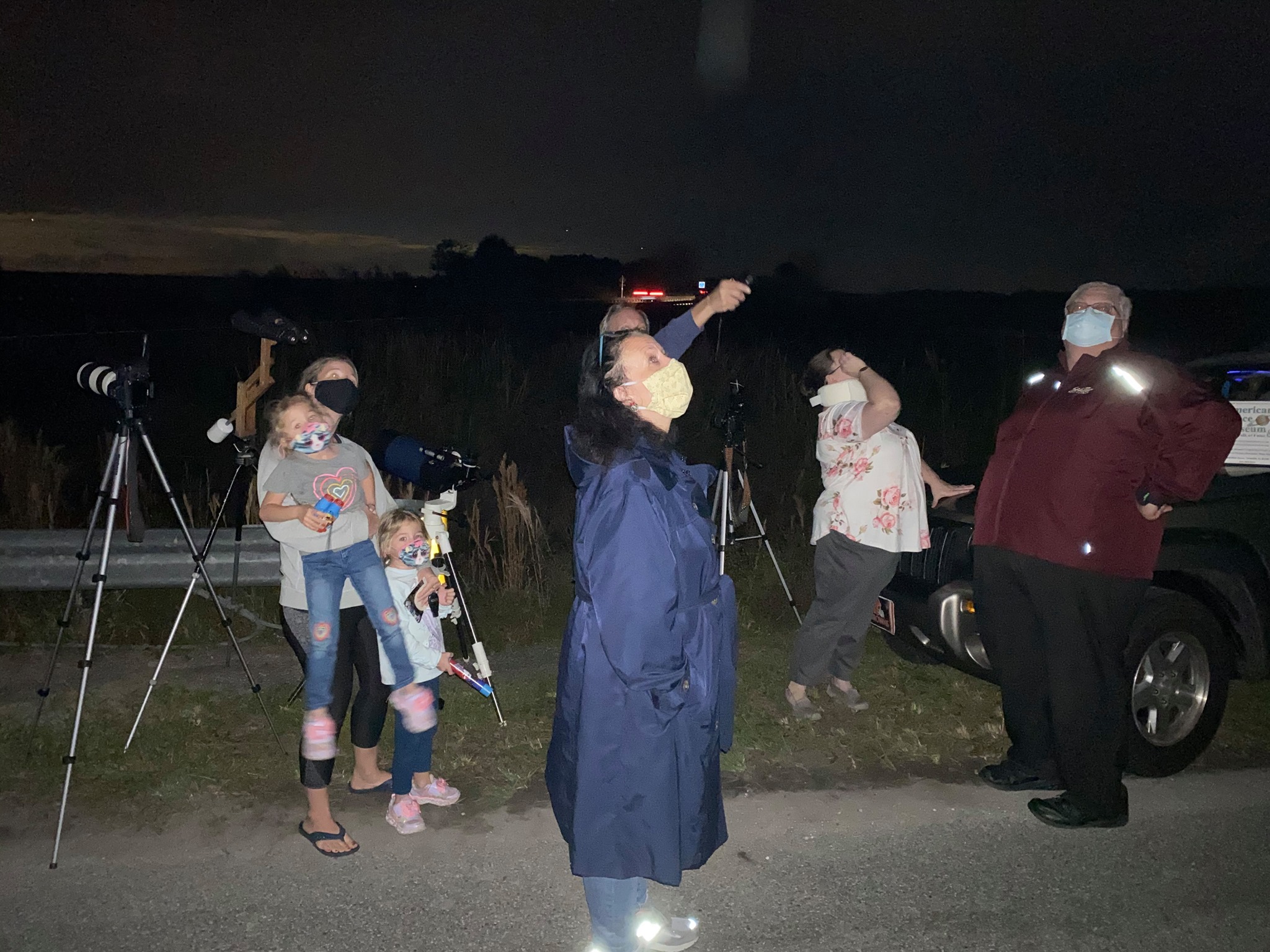
Furthermore on Dec. 21 the Great Conjunction of gas giants Jupiter and Saturn made them look like a ‘Double Planet’
The gas giants were separated by roughly a fifth of the diameter of the typical full moon.
“At this proximity, the planets will appear to touch or even form one large, brilliant star in the sky,” wrote PBS.
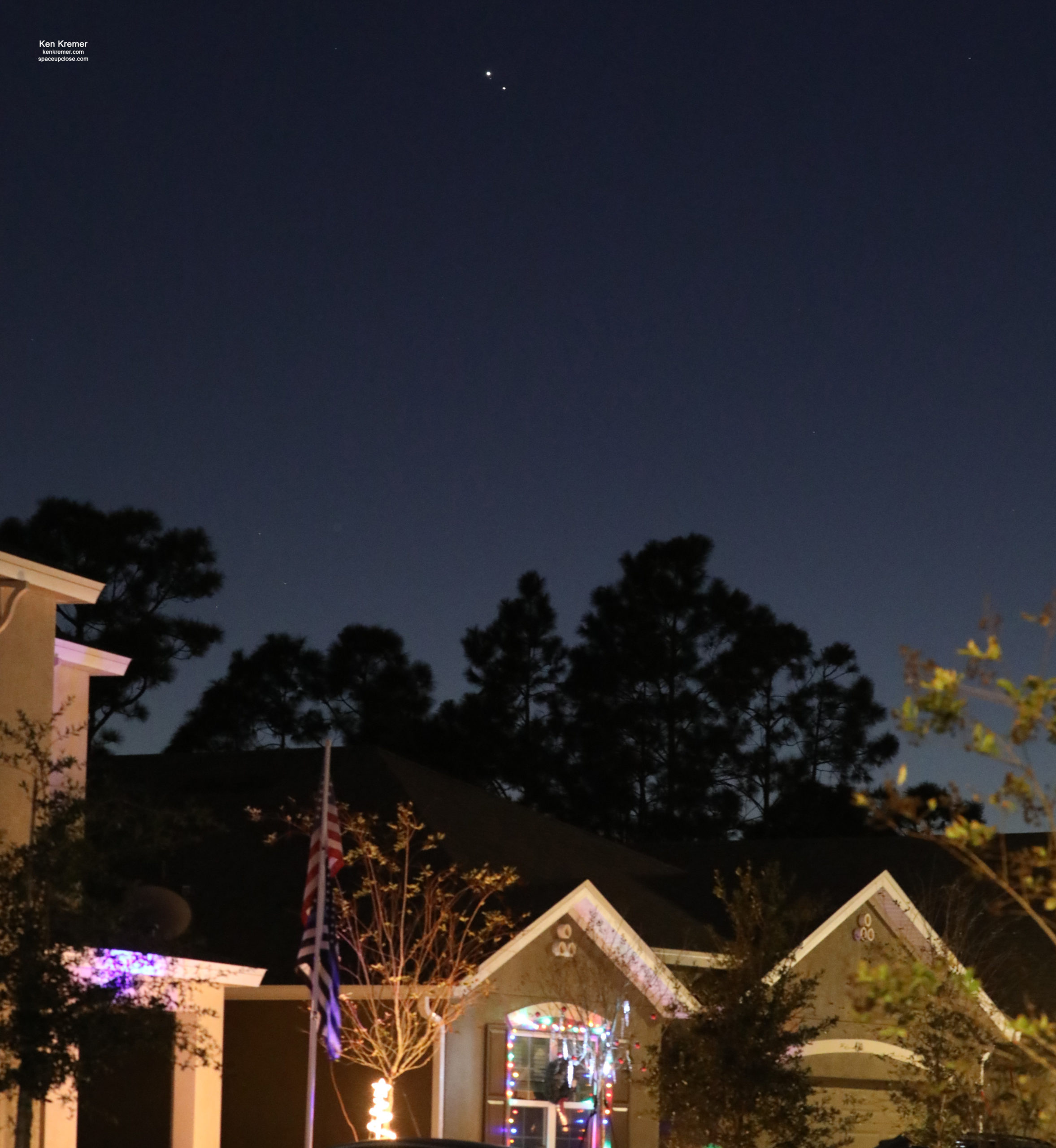
“Alignments between these two planets are rather rare, occurring once every 20 years or so, but this conjunction is exceptionally rare because of how close the planets will appear to one another,” said Rice University astronomer Patrick Hartigan. “You’d have to go all the way back to just before dawn on March 4, 1226, to see a closer alignment between these objects visible in the night sky.”
Jupiter and Saturn have been approaching one another in Earth’s sky since the summer. From Dec. 16-25, the two will be separated by less than the diameter of a full moon.
“On the evening of closest approach on Dec 21 they will look like a double planet, separated by only 1/5th the diameter of the full moon,” said Hartigan, a professor of physics and astronomy. “For most telescope viewers, each planet and several of their largest moons will be visible in the same field of view that evening.”
The four Galilean moons are visible in my photos.
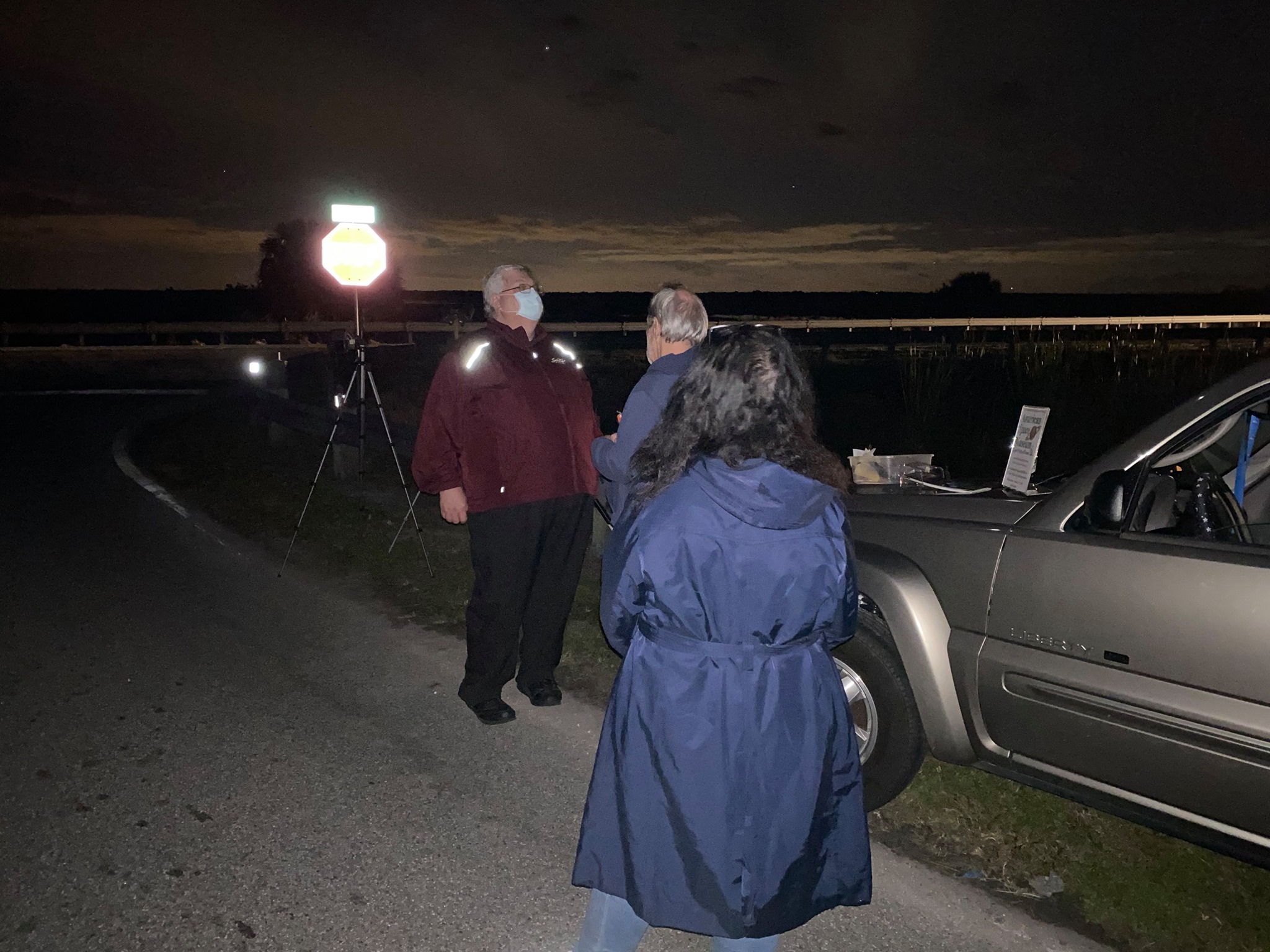
Watch Ken’s continuing reports about NASA missions, National Security missions, SpaceX Crew Dragon, Starlink, Commercial Crew and Artemis and onsite for live reporting of upcoming and recent SpaceX and ULA launches including Demo-2, Starlink, X-37B, Solar Orbiter, Mars 2020 and more at the Kennedy Space Center and Cape Canaveral Space Force Station.
Stay tuned here for Ken’s continuing Earth and Planetary science and human spaceflight news: www.kenkremer.com –www.spaceupclose.com – twitter @ken_kremer – email: ken at kenkremer.com
Dr. Kremer is a research scientist and journalist based in the KSC area, active in outreach and interviewed regularly on TV and radio about space topics.
………….
Ken’s photos are for sale and he is available for lectures and outreach events
Please consider supporting Ken’s work by donating at Patreon:
https://www.patreon.com/kenkremer
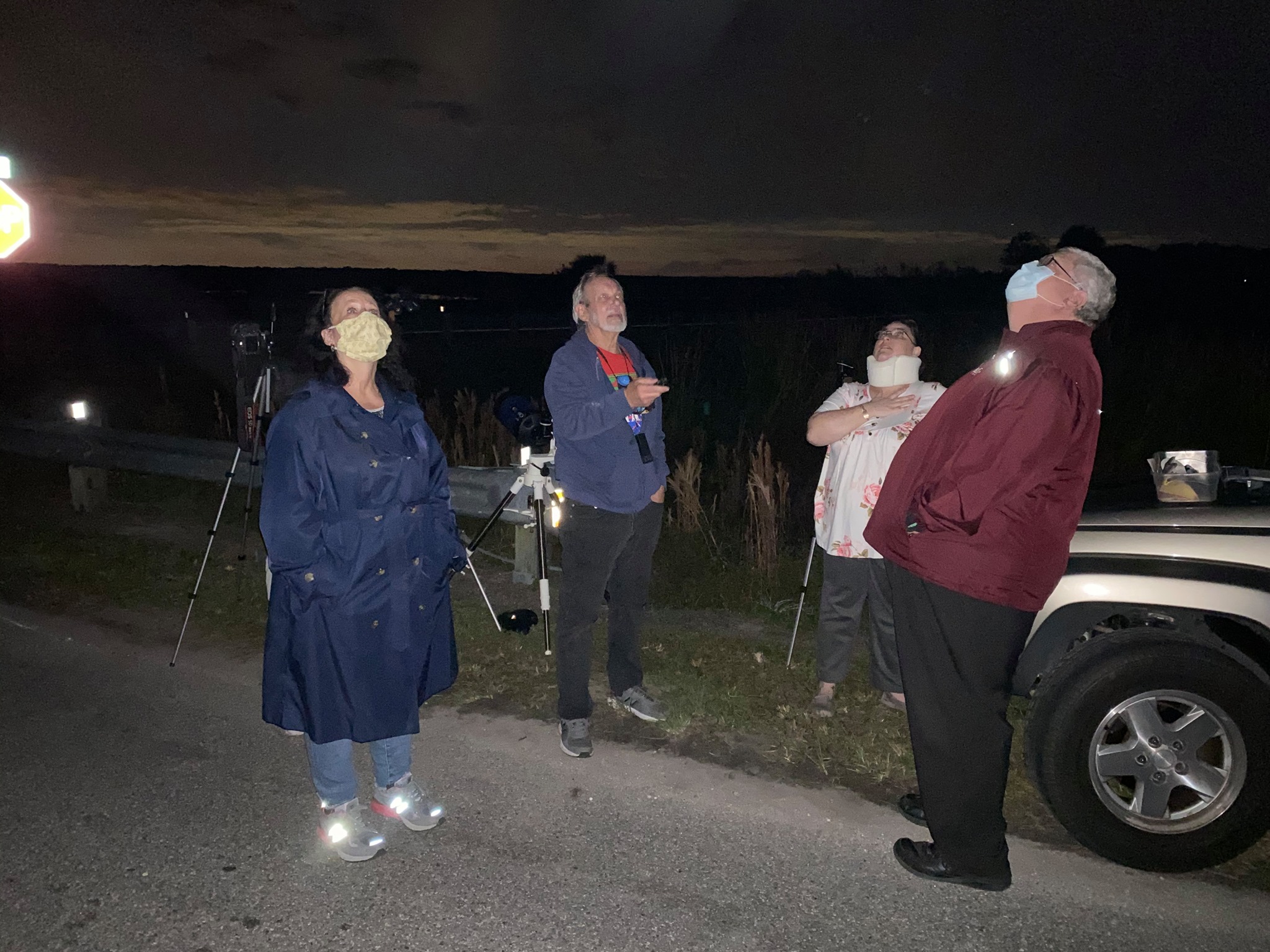
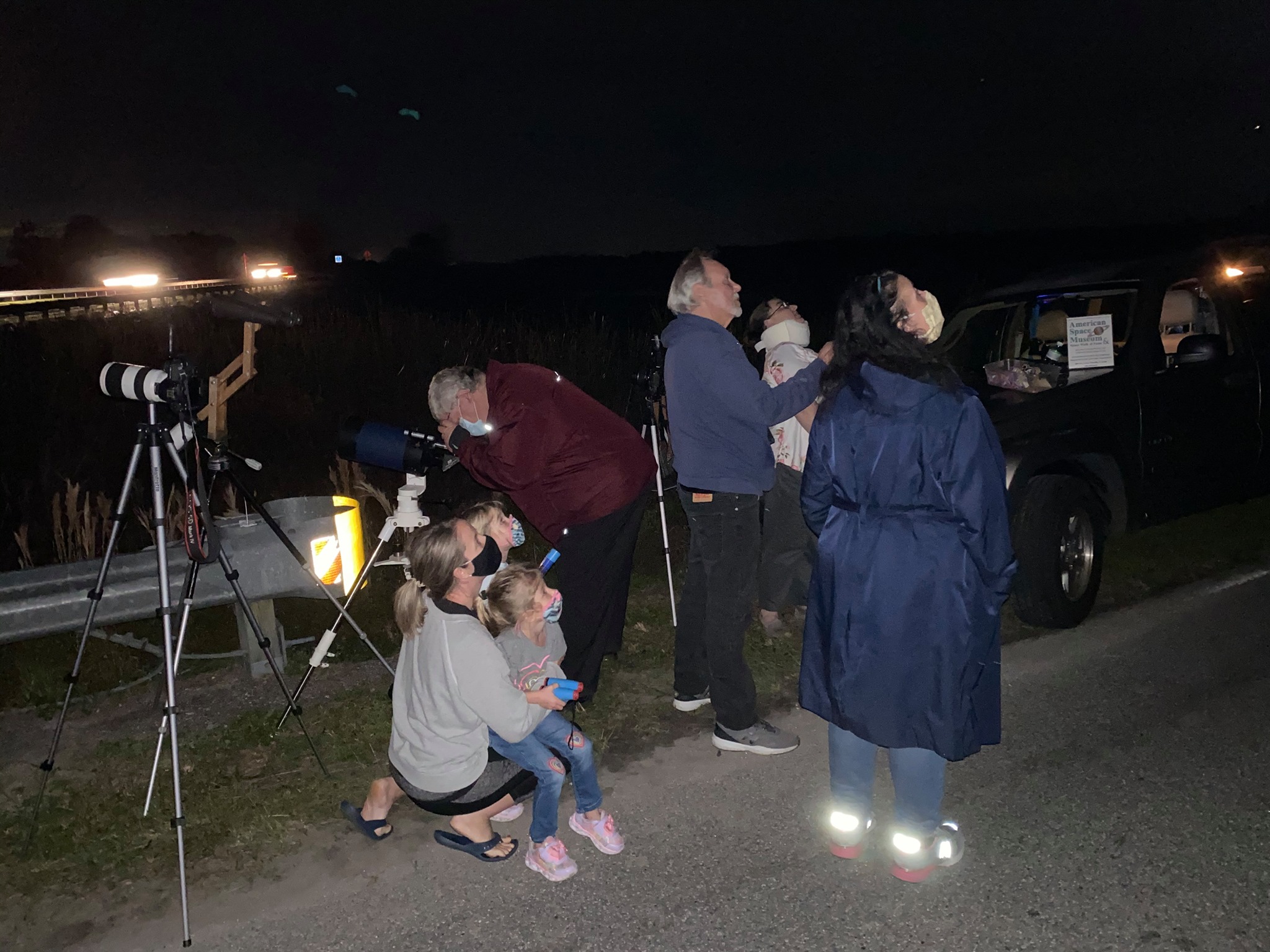
x



